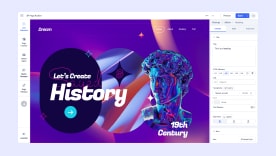- TemplatesTemplates
- Page BuilderPage Builder
- OverviewOverview
- FeaturesFeatures
- Dynamic ContentDynamic Content
- Popup BuilderPopup Builder
- InteractionsInteractions
- Layout BundlesLayout Bundles
- Pre-made BlocksPre-made Blocks
- DocumentationDocumentation
- EasyStoreEasyStore
- ResourcesResources
- DocumentationDocumentation
- ForumsForums
- Live ChatLive Chat
- Ask a QuestionAsk a QuestionGet fast & extensive assistance from our expert support engineers. Ask a question on our Forums, and we will get back to you.
- BlogBlog
- PricingPricing
Collection Fields
Collection fields define the structure of your Dynamic Content in SP Page Builder. Each field type can be configured allowing you to tailor the data entry process to your specific needs.
Common Field Settings
Each field includes the following configurable options:
- Field Name – A clear, descriptive label for the field.
- Help Text – Instructions or additional context.
- Placeholder – A default hint inside input fields.
- Required – Ensures the field must be filled before saving.
Basic Fields
These essential fields are automatically included in every collection item and help structure your content:
- Title – The main name of the entry.
- Alias – A URL-friendly version of the title for clean URLs.
These cannot be removed as they are crucial for content organization and accessibility.
Custom Fields
Custom fields allow you to add specific data types tailored to your content.
Text Field
For short text inputs (e.g., names, tags).
- Max Character Limit – Set a restriction on text length.
- Enable Text Area – Choose between a single-line or multi-line input.
Content Field
For adding rich text with formatting options.
- Min/Max Character Limit – Control content length.
Image Field
For uploading and displaying images.
- Upload Option – Allows users to upload images directly.
Gallery Field
For creating and displaying image galleries. It supports all file types that are compatible with SP Page Builder Media Manager.
- Name - Give a name to your gallery.
- Help Text - The text entered here will appear as a tooltip next to your gallery Name.
- Min Item Limit - Define the minimum number of image items that must be added to the gallery.
- Max Item Limit - Define the maximum number of image items that can be added to the gallery.
Email Field
For storing email addresses.
Phone Field
For storing phone numbers.
Date/Time Field
For selecting dates and timestamps.
- Show Time – Enable to include time selection.
Number Field
For numerical values (e.g., prices, counts).
- Number Format – Choose integer or decimal.
- Min/Max Limit – Define constraints.
- Allow Negative Numbers – Enable if necessary.
Link Field
For storing and displaying web addresses.
Switch Field
For adding an on/off toggle option.
- Default State – Set the initial state to on or off.
Video Field
For embedding and displaying videos. Upload your video file in .mp4 or .mov formats, or simply add links from YouTube or Vimeo.
- Name - Give a name to your video.
- Help Text - The text entered here will appear as a tooltip next to your video Name.
File Field
For adding and downloading files.
- Name - Give a name to your File.
- Help Text - The text entered here will appear as a tooltip next to your file Name.
- Extension - choose the format of the extension which you wish to upload as a file.
Note: In order to make your files downloadable, set the text field source to File Field and enable the “Download” option from the General settings.
Option Field
For selecting from predefined options.
- Define Options – Set up selectable values.
- Default Selection – Choose an initial value.
Rating Field
For displaying pre-defined ratings across your dynamic items.
- Name – The label or identifier of the field that will appear in the Dynamic Content items. Example: Product Rating, Service Quality, or Course Score.
- Placeholder – A short hint or sample value shown inside the input box before a rating is entered. It helps admins understand the expected input format. Example: Enter rating out of 5, e.g., 4.5.
- Help Text – The text entered here will appear as a tooltip next to your Rating Field name. This can help guide the admin when adding a rating. Example: Set a numeric rating between 0 and 5.
- Default Value – The rating value that will automatically appear when creating a new item, if no custom value is provided. Example: 5 (for a perfect rating by default) or 0 (to start blank).
- Minimum – Specifies the lowest possible value that can be assigned to the rating field. This sets the starting point of the rating range. Example: 0 means the rating can start from zero. 1 means the lowest possible rating is one.
- Maximum – Defines the highest possible value for the rating. Typically used to indicate the top score in your scale. Example: 5 (for a 5-star scale) or 10 (for a 10-point system).
- Step – Determines the increment or precision allowed when setting a rating value. Example: 1 allows only whole numbers (1, 2, 3, 4, 5). 0.1 allows one decimal place (4.1, 4.2, etc.).
- Format: Specifies how the rating value should be displayed on the frontend. You can choose between numeric or symbolic formats, depending on your site style or template.
Reference Fields
These fields establish relationships between Collections, enabling dynamic content connections.
Reference Field (One-to-One Relationship)
Links a single item from another collection.
- Best for: Connecting one-to-one relationships (e.g., linking an Author to a Blog Post).
Multi-Reference Field (One-to-Many Relationship)
Links multiple items from another collection.
- Best for: Connecting one-to-many relationships (e.g., linking multiple Sessions to an Event).
Learn more about Collection References.
In the next section, discover how to add and manage Collection Items within your collections.

